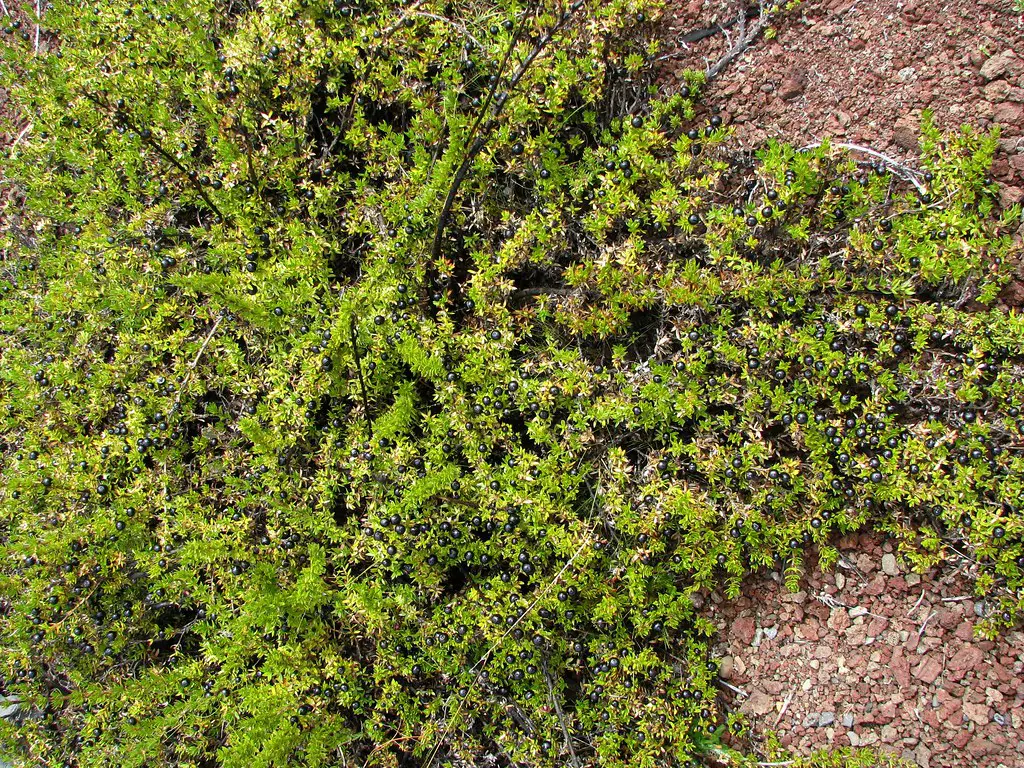Coprosma is a genus of shrubs and small trees that are well-loved for their glossy leaves and striking appearance. These evergreen plants, native to New Zealand, Hawaii, and other Pacific Islands, are a member of the Rubiaceae family. Depending on the specific species and growing conditions, Coprosma can vary in size and form, but they usually feature dense growth with beautiful shiny leaves that are often variegated.
Coprosma is also known as “mirror plant” or “looking-glass plant,” referring to the extraordinary glossiness of the leaves. This attractive shine gives the plants a polished appearance, creating a striking contrast in the garden landscape. Moreover, some species produce attractive berries, adding to the plant’s ornamental value.
These plants are known for being hardy and versatile, able to thrive in a variety of climates and conditions. They are often used in landscape design for their architectural form and colorful foliage. From the versatile Coprosma repens to the hardy Coprosma kirkii, these plants offer an appealing choice for gardeners looking to add texture and interest to their garden spaces.
| Attribute | Details |
|---|---|
| Common Names | Mirror Plant, Looking-Glass Plant |
| Botanical Name | Coprosma |
| Family | Rubiaceae |
| Plant Type | Evergreen shrub or small tree |
| Mature Size | 3-8 feet (depending on species) |
| Sun Exposure | Full sun to partial shade |
| Soil Type | Well-drained soil |
| Hardiness Zones | 8-11 |
| Native Area | New Zealand, Hawaii, Pacific Islands |
Coprosma Care
Caring for Coprosma is relatively straightforward, as it’s a robust and adaptable plant. It can grow in a variety of soil types as long as good drainage is provided. Planting in a sunny spot with some shelter from harsh winds will give the best results.
Watering needs are moderate, and once established, Coprosma is relatively drought-tolerant. Occasional pruning may be necessary to maintain the desired shape, and a balanced fertilizer can be applied during the growing season to boost growth and coloration.
Light Requirement for Coprosma
Coprosma prefers full sun to partial shade. Adequate sunlight helps in keeping the leaves’ vibrant colors and glossiness. However, it can tolerate some shade, especially in hotter climates.
Soil Requirements for Coprosma
Well-drained soil is essential for Coprosma’s growth. It can adapt to various soil types, including sandy, loamy, or even clay soils, provided they are well-draining.
Water Requirements for Coprosma
Moderate watering is suitable for Coprosma, particularly in the growing season. Established plants are relatively drought-tolerant, but regular watering helps in maintaining a healthy and lush appearance.
Temperature and Humidity
Coprosma thrives in temperatures that mirror its native Pacific habitats. While it can handle a range of temperatures, frost can cause damage. Humidity levels are usually not a concern for Coprosma.
Fertilizer
A balanced slow-release fertilizer applied in spring can support growth and enhance the vibrant colors of the leaves. Over-fertilizing should be avoided, as it may lead to leggy growth.
Pruning Coprosma
Pruning can be done to maintain shape or remove any dead or damaged branches. It’s best done in late winter or early spring before new growth begins.
Propagating Coprosma
Propagating Coprosma can be done through cuttings. Taking semi-hardwood cuttings during summer and rooting them in a well-draining medium is a common and effective method.
How To Grow Coprosma From Seed
Growing Coprosma from seed is a slow process and often not as efficient as propagation from cuttings. Seeds can be sown in a well-draining soil mix, kept moist, and placed in a warm location.
Common Pests & Plant Diseases
Scale Insects
Scale insects can be treated with insecticidal soap or horticultural oil.
Aphids
Aphids can be controlled with insecticides or natural predators like ladybugs.
Common Problems With Coprosma
Leggy Growth
If the plant becomes leggy and loses its compact shape, it might be due to insufficient light. Moving it to a sunnier location or pruning can help.
Loss of Color
Lack of nutrients or inadequate sunlight might cause the loss of vibrant leaf color. Adjusting the fertilizer or light exposure can solve this problem.
Pro Tips
- Select the right species for your particular climate and garden conditions.
- Pair with other drought-tolerant plants for a cohesive garden design.
- Consider planting in containers for easier control over soil and moisture.
- Utilize the different colors and textures of Coprosma species to create visual interest in the garden.
- Plant in mass for a dramatic effect, or use as a specimen plant to showcase its unique appearance.




